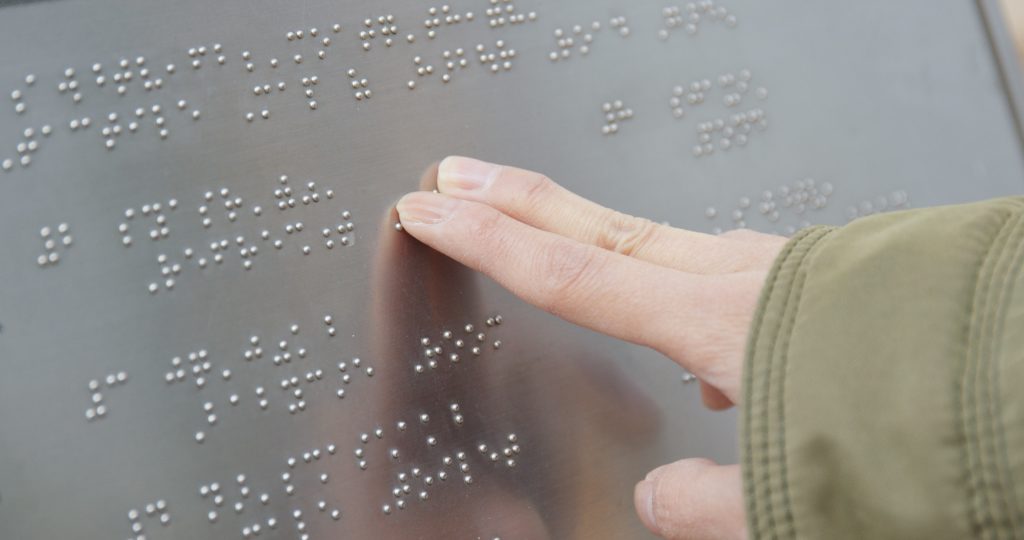Touchscreens And Accessibility: A Growing Challenge For The Visually Impaired
In our rapidly digitizing world, touchscreens are becoming an integral part of our everyday lives. They've transformed everything from coffee machines to supermarket checkouts, seemingly improving efficiency and ease of use for most people. However, as highlighted in a recent 9News article published in May, these developments can also bring significant challenges for the visually impaired community.
Nadia Mattiazzo, who is blind and serves as the CEO of Women with Disabilities Victoria, shared her personal experience with the difficulties posed by touchscreens. After her local café installed a touchscreen eftpos machine in 2016, Mattiazzo found herself unable to pay for her coffee. The device’s lack of fixed buttons to assist her in locating the digits to enter her PIN meant that this previously simple task had become an unexpected obstacle.
From that point onwards, Mattiazzo noted a significant shift in her daily experiences. Touchscreen eftpos devices started appearing in numerous venues, making everyday transactions increasingly challenging. Teaming up with former disability discrimination commissioner Graeme Innes, Mattiazzo took action, suing the Commonwealth Bank in a landmark case. Although the bank eventually agreed to enhance the accessibility of their eftpos touchscreen terminals, the broader issue of touchscreen accessibility remains largely unaddressed.

With touchscreens proliferating at an accelerating rate, Mattiazzo’s experiences are far from unique. Many visually impaired individuals are grappling with the same issues as they navigate an increasingly touchscreen-based world. Everyday activities, such as grocery shopping or using appliances, have become fraught with obstacles and stress. There are even legal implications, as visually impaired individuals may find themselves unable to enter their PINs on touchscreens when purchase amounts exceed tap-and-go limits.

Australia’s Disability Discrimination Act prohibits discrimination in the provision of goods and services, but it does not mandate that products themselves be accessible. This legal gap leaves many visually impaired individuals without the protections they need to fully participate in our increasingly digitized society.
Despite these challenges, there are glimpses of potential solutions. Major electronics companies are integrating apps that can be synched with their devices. If these apps are designed with accessibility in mind, they could potentially make these devices more usable for visually impaired individuals. One shining example is Apple’s VoiceOver screen-reading technology. Included in iOS since 2009, this feature has been a game-changer for visually impaired users, showing the possibilities of accessible touchscreen technology.
However, these solutions are not comprehensive fixes. The fundamental problem lies not with the technology itself but with the lack of accessibility considerations in the design process. Apple’s success has proven that accessible touchscreen technology is not only possible but can be highly effective—it is simply a matter of prioritising it.
At Sunsets Disability Support Services, we understand the importance of inclusion and accessible technology in daily living. We provide support coordination services to help individuals navigate these challenges, and we are committed to advocating for a more inclusive future.
The need for more accessible technology is a shared responsibility. As Mattiazzo suggests, we must implement laws that mandate new technologies to be accessible, private, confidential, and easy to use for all community members. Only through collective effort can we ensure that the march of technology brings benefits for everyone, regardless of their abilities.
As technology continues to advance, it must advance for everyone. Inclusion and accessibility should be at the forefront of our collective consciousness, inspiring us to create a world where technology enhances life for all, not just a select few.

Get in touch
We’re ready to help you discover a different kind of care. If you have any questions or would like to learn more about our services, don’t hesitate to contact us. We’re here to guide you through the process and help you start your journey towards empowerment.
Copyright © 2023 Sunsets Disability Support Services. All rights reserved.
Subscribe Our Newsletter
Important Pages
Contact Details
- Paradise Point
- info@sunsetsdss.com
- 0402 414 406
